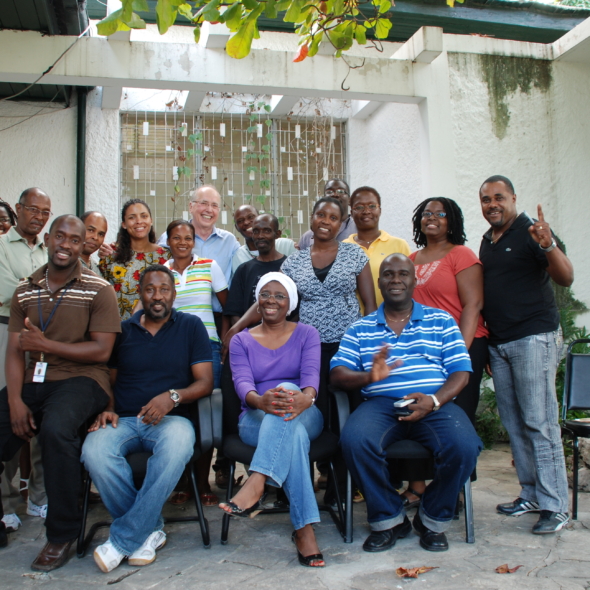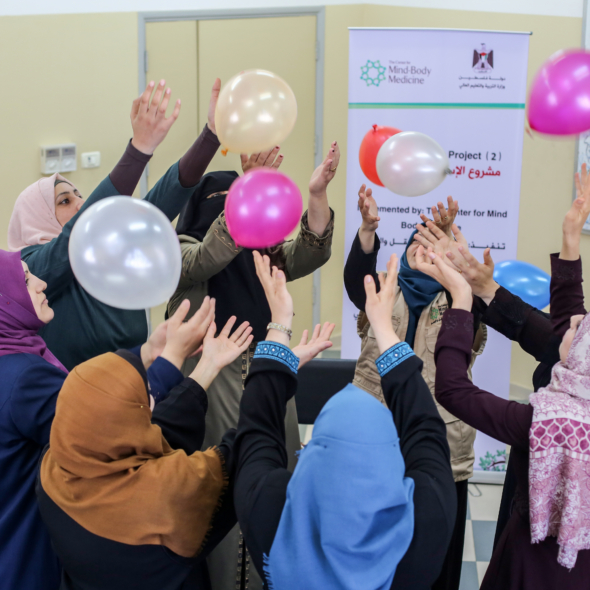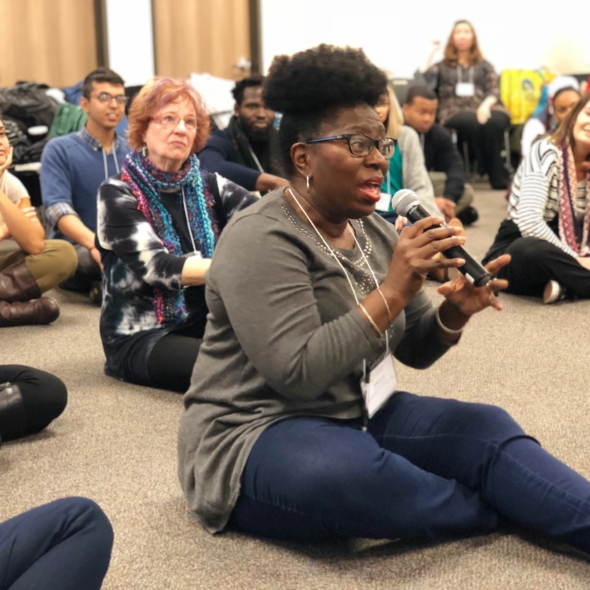The school is the College Canado Haitien, one of the best in Port-Au-Prince, we are told, before the earthquake and afterwards, too. The students, a few weeks after the school has reopened, are sharp in well-pressed maroon and khaki uniforms—the girls’ hair pulled through berets, the boys sideburns neatly trimmed, tout propre, I think.
Instead of the pre-earthquake concrete buildings, there are open sided wood and metal sheds. Sounds flow from one classroom to another, overlapping in a kind of reverberating clamor. Toward the end of one of our classes, when time of dancing is kept by nimble palms on desktops, the whole campus rocks.
Our equipe, our “team,” –the French is beginning to emerge from deep layers of my unconscious—includes six of us: Lee-Ann juggling logistics as before, with Cassidy, my assistant back home, here to help her and me; Amy, the social worker who is our clinical director, will come tomorrow. Today, Lynda and Kathy, psychologist and family physician, are with me. They are CMBM senior faculty who are adventurous enough to come and to commit to coming again and again. They and Amy will teach our Haitian colleagues and provide consulting and supervision as we build our program.
Today we have been invited by Frere Jacques Anthony Germeil, the principal, to College Canado Haitien. We will have an hour in each of four classrooms with eleventh and twelfth graders who have been told they will learn “lessons in dealing with stress.”
I lead the first class and the third, forty twelfth graders in each, sitting shoulder to shoulder at their desks. Lynda and Kathy, experienced with kids, but new to Haiti and to the trauma and loss that overwhelms the population, will lead the second and fourth classes.
We begin our classes lightly—a little goofily—”How do you breathe?”, I ask to general puzzlement, and then talk about babies doing it easily—naturally—their bellies rising and falling, while adults, and even high school students, cramped in chairs and on benches, barely move their chests. Laurent, my interpreter, and I act out the roles of cats in full fight or flight mode—hissing and growling at each other, and then stepping back to breathe easily. Lynda has her all-boys class—a surprise—consider Kobe Bryant, cool and relaxed, imagining his shots, inspiring the boys to imagine theirs swishing the net.
When we turn the topic to relaxation’s antipode, stress, the bravado of a few—”I’m fine, we’re all fine,” claims one boy; “it was simply a natural disaster” intones another—contends with the more complex memories of their classmates.
Soon, in each and every class, there is a rush of sharing of what happened on January 12th, of how surprise and relief yielded to horror. “I thought the shaking would be eternal. Then, it stopped, and I thought, ‘that’s not so bad, I am ok,’ and I laughed, then I saw my sister covered in dust like a ghost, and I was afraid. And then, underneath my neighbor’s house, there were twisted bodies.”
And the stories come—many, we learn, shared for the first time—and the classmates’ losses pile up: a mother gone, an older brother, “my best friend,” “almost my whole family,” We hear of bodies discovered under rubble and strewn on sidewalk, of dogs chewing on corpses.
When we ask if there are questions, a small forest of hands rises: “How do you go to sleep when these memories keep coming in nightmares?” “How can you breathe deeply to relax when the air is so bad?” “How do you deal with family members who now are arguing all the time?” “What do you do with your belief that another earthquake is coming, or as some say, ‘a tsunami’?”
More about the techniques we use to address these questions coming soon . . . .


